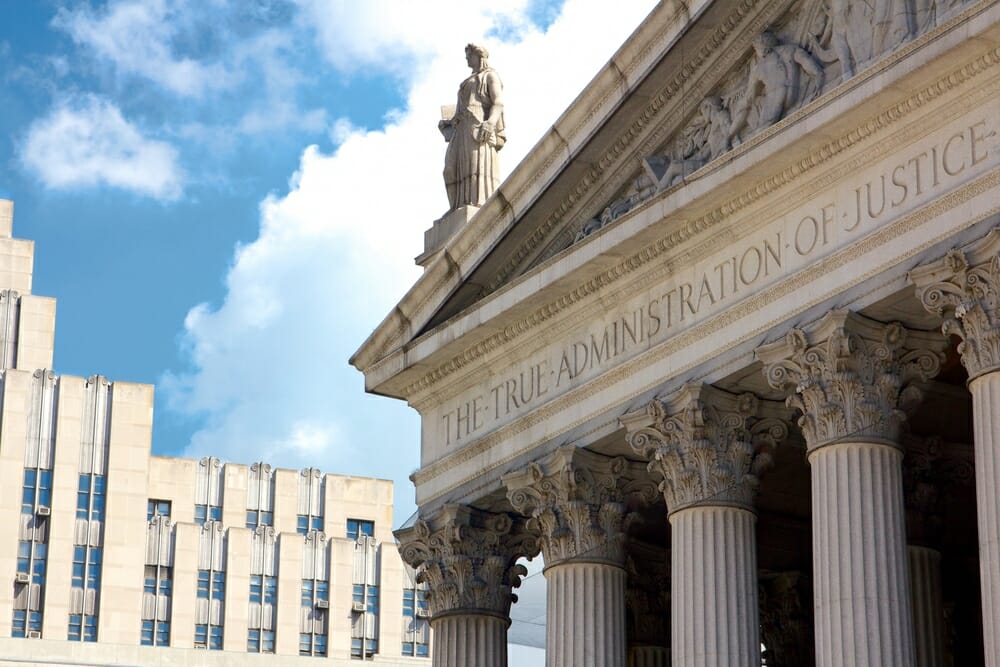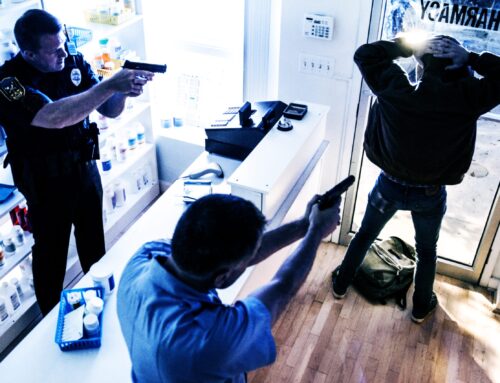Department of Justice Announces New Steps in Improving Criminal Justice Practices

One year after the implementation of the Executive Order on Advancing Effective, Accountable Policing and Criminal Justice Practices to Enhance Public Trust and Public Safety (May 25th, 2022), the United States Department of Justice (DOJ) published a report outlining ten additional steps toward more effective and accountable policing and criminal justice practices. The following sections outline some of these steps and how they may change U.S. criminal justice in such a way that improves offenders’ lives without reducing public safety.1
Six Ways the DOJ Is Working Toward Criminal Justice Reform
Citing information from the Office of Public Affairs at the DOJ, the Justice Department is working toward more effective and compassionate criminal justice by:
1). Raising the standards of federal law enforcement agencies. The DOJ put out new guidelines for all federal law enforcement agencies, including new guidelines on using force, chokeholds and carotid restraints, no-knock entries, and proper body-worn camera use.
2). Promoting new practices in law enforcement response to behavioral or mental health crises. The DOJ is awarding discretionary grants to promote the adoption of new guidance on best practices for law enforcement officers responding to calls regarding individuals with disabilities or individuals suffering behavioral or mental health crises.
3). Laying out criteria for improving conditions of confinement for prisoners. The DOJ released new criteria for how incarcerated individuals should be housed, particularly regarding restrictive housing and efforts to reduce the need for and use of restrictive housing.
4). Creating new data collection systems to inform the public better. The DOJ implemented new systems to better manage and present to the public the following data reporting programs: The FBI’s National Use-of-Force data collection program, The Law Enforcement Officers Killed and Assaulted (LEOKA) data collection program, The Death in Custody Report Act program, and The National Incident-Based Reporting System (NIBRS).
5). Outlining new guidelines on preventing racial profiling within law enforcement offices. The DOJ updated its guidance on race, ethnicity, national origin, religion, sexual orientation, and gender identity in law enforcement activities. The new guidelines seek to prohibit racial profiling by federal law enforcement agencies by “[setting] forth limited circumstances when federal law enforcement agents or officers may consider a protected characteristic.”

6). Supporting actions to reduce criminal justice system interactions safely. The DOJ released a Strategic Plan detailing how the DOJ and all other federal law enforcement agencies can “reduce criminal justice system interactions, support rehabilitation during incarceration, and facilitate reentry for people with criminal records.”2
Attorney General Merrick B. Garland commented on the new commitments, indicating these were enacted to continue improving law enforcement interactions within their communities and criminal justice systems more broadly. “While our work is not done, we are proud of the important changes we have made over this past year to update our internal policies and better provide our state and local partners with the resources and support they need to keep communities safe from violent crime, advance transparency, and build community trust,” said Garland, indicating the fact that improving how the U.S. addresses crime and justice is an ongoing, always-evolving effort.
Why Criminal Justice Reform Is Needed
The United States incarcerates some 2.2 million people between its state and federal prisons and jails, more than any other country in the world, quadruple the 500,000 people it incarcerated 30 years ago. The U.S. spends about $182 billion on incarceration each year, alleging that punishment for crime via incarceration is a sufficient deterrent to crime.3
However, while crime rates fell between the 1990s and early-2000s, they have more or less plateaued over the last 20 years, with occasional spikes and dips. There are other ways to improve results for offenders and simultaneously deter criminal activity, and criminal justice reform efforts to date have typically sought to achieve these objectives by providing meaningful sentencing reform, reducing repeat offenders (curbing recidivism), and supporting law enforcement.4

More broadly, criminal justice reform efforts typically revolve around important topics like sentencing reform, alternatives to incarceration, clemency, abolishing the death penalty, reducing racial profiling, abolishing solitary confinement, improving policing, and supporting formerly incarcerated individuals through reentry. One area that does not receive enough focus is educating inmates and supporting them through real reform efforts while they are in prison so they might have better lives post-incarceration.
Inmates need support and programs that improve their self-respect, communication abilities, and personal relationship skills. They must be taught how to avoid criminal behavior and break destructive habits. They need to be given tools to address life’s challenges without resorting to criminal activity as a “solution” to their problems; the U.S. criminal justice and incarceration systems must provide those individuals who become entwined within those systems with the life skills they need to become productive, responsible members of their communities.
The Department of Justice is progressing toward a more fair, equitable, and effective criminal justice system. However, much work must be done to create a system that truly reforms offenders while reducing crime.
Sources:
- WH. “Executive Order on Advancing Effective, Accountable Policing and Criminal Justice Practices to Enhance Public Trust and Public Safety.” The White House, 2022. whitehouse.gov
- DOJ. “Justice Department Announces 10 Additional Steps on the One-Year Anniversary of Executive Order 14074 on Advancing Effective, Accountable Policing and Criminal Justice Practices to Enhance Public Trust and Public Safety.” United States Department of Justice, Office of Public Affairs, 2023. justice.gov
- BJS. “Total Correctional Population.” Bureau of Justice Statistics, 2023. bjs.gov
- PRC. “What the data says (and doesn’t say) about crime in the United States.” pewresearch.org




